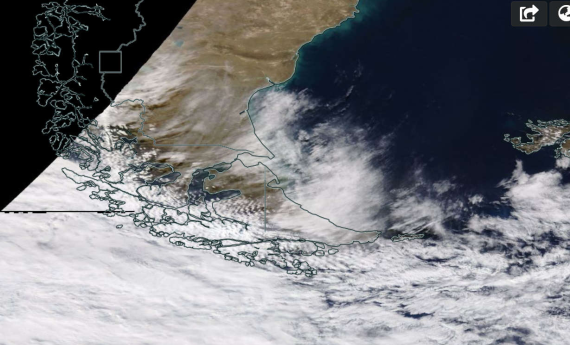On Tuesday, 24th Sept, the first day flight dedicated to southern hemispheric chemistry was successfully performed. The area of interest was south- and eastward of Rio Grande towards 63°S. There aged and chemically processed air was probed in the polar vortex and in the vicinity of the polar vortex edge. The flight was coordinated with ground-based and balloon-borne ozone measurements on King George Island, Marambio Station in Antarctica and at Ushuaia.
After one day of ground maintenance, preparations for the last night flight in this part of the campaign are currently ongoing.
Wind conditions are favourable for mountain waves above the Southern Andes and the Antarctic Peninsula. The flight planned for tonight consists of two cross mountain legs over both mountainous regions and over the Drake Passage, and an additional more complex hexagonal pattern at the end of the flight above the southern tip of the Southern Andes. Mountain wave signatures are already visible in the cloud patterns of the latest satellite image.

Of course, this mountain wave event is supported by radiosonde launches from Rio Grande and El Calafate. The team in Rio Grande was lucky with getting a balloon up in the air yesterday afternoon. Wind speed was 50 km/h with gusts up to 75 km/h and the wind rotors in the lee of the hangar pushed the balloon with the radiosonde quite close to the tower of the airport. We already feared this balloon will never make it across all the lamps and antennas in its surrounding. But see for yourself:

